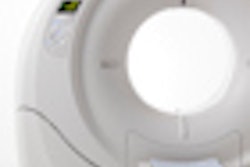
NEW YORK (Reuters Health), Jul 23 - Direct ambulance admission to the cardiac catheterization laboratory significantly reduces the time to performance of primary percutaneous intervention (PCI), according to a report in the June issue of the American Heart Journal.
The aim of the American Heart Association/American College of Cardiology "Door-to-balloon: an alliance for quality" campaign is to increase the percentage of patients with ST-elevation myocardial infarction (STEMI) in whom infarct artery patency is achieved within 90 minutes of symptom onset, the authors explain.
Dr. Michael F. Dorsch and colleagues from Leeds General Infirmary, Leeds, U.K., investigated the impact of prehospital paramedic electrocardiogram (ECG) diagnosis and subsequent direct transfer to the cardiac catheterization laboratory on door-to-balloon and call-to-balloon times in primary PCI.
Compared to patients admitted via the emergency room, the authors report, direct ambulance admission significantly reduced door-to-balloon times (from 105 minutes to 58 minutes) and call-to-balloon times (from 143 to 105 minutes).
Ninety-four percent of patients admitted directly from the ambulance met the 90-minute door-to-balloon time, the report indicates, compared with only 29% of patients referred from the emergency department.
Both door-to-balloon and call-to-balloon times were significantly longer outside normal working hours and in women compared with men, the researchers note.
Thirty-day and 12-month mortality were lower for patients admitted directly, the investigators say, but the differences were not statistically significant.
"Prehospital paramedic ECG diagnosis of STEMI and subsequent direct ambulance admission to the cardiac catheterization laboratory dramatically reduces door-to-balloon times in primary PCI, enabling almost all patients to be treated within the 90-minute target," the authors conclude. "We believe this approach should be a key element of any contemporary primary PCI service."
Am Heart J 2008;155:1054-1058.
Last Updated: 2008-07-22 13:34:58 -0400 (Reuters Health)
Related Reading
Recommended door-to-balloon times rarely achieved for MI-related PCI in U.S., February 11, 2005
Copyright © 2008 Reuters Limited. All rights reserved. Republication or redistribution of Reuters content, including by framing or similar means, is expressly prohibited without the prior written consent of Reuters. Reuters shall not be liable for any errors or delays in the content, or for any actions taken in reliance thereon. Reuters and the Reuters sphere logo are registered trademarks and trademarks of the Reuters group of companies around the world.


















